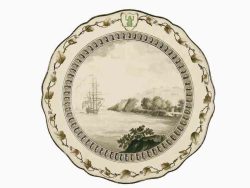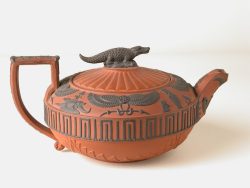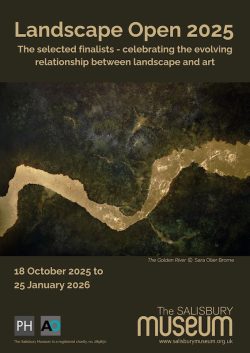 JOSIAH Wedgwood is best known nowadays for his Jasperware pottery, with its distinctive light-blue colour. But the 18th century potter was a true radical, as historian Tristram Hunt will explain when he gives Salisbury Museum’s annual lecture, on Wednesday 3rd December, at 7.30pm, at Salisbury Methodist Church in St Edmund’s Church Street.
JOSIAH Wedgwood is best known nowadays for his Jasperware pottery, with its distinctive light-blue colour. But the 18th century potter was a true radical, as historian Tristram Hunt will explain when he gives Salisbury Museum’s annual lecture, on Wednesday 3rd December, at 7.30pm, at Salisbury Methodist Church in St Edmund’s Church Street.
The museum currently has a major exhibition, the Landscape Open, running to 25th January 2026.
Wedgwood is widely known as the “Father of English Potters”, who revolutionised the production of ceramics in 18th century Britain with his most famous invention, Jasperware. What is less well known is that he was also a radical who campaigned for free trade, religious toleration and actively participated in the Abolition of Slavery cause.
Tristram Hunt, the director of the Victoria and Albert Museum, is an historian, broadcast journalist and a former politician, serving as Labour MP for Stoke on Trent between 2010 and 2017. His biography of Josiah Wedgwood captures the energy, ambition and originality of the man, and his astonishing contribution to the transformation of modern Britain.
 Wedgwood produced medallions supporting the French Revolution and the American War of Independence. Most powerfully, he commissioned and financed the ceramic Emancipation Badge which depicted a slave in chains and inscribed “Am I Not a Man and a Brother?” which became the symbol of the abolitionist movement.
Wedgwood produced medallions supporting the French Revolution and the American War of Independence. Most powerfully, he commissioned and financed the ceramic Emancipation Badge which depicted a slave in chains and inscribed “Am I Not a Man and a Brother?” which became the symbol of the abolitionist movement.
He revolutionised the production of ceramics in Georgian Britain by marrying science and style, technology and entrepreneurialism, manufacturing efficiency and retail flair. Many common sales practices today, such as direct mail, money-back guarantees, free delivery and celebrity endorsements, started with Josiah Wedgwood.
Jasperware, the most famous of Josiah’s inventions, appeared in 1774 after many years and thousands of experiments, with the renowned light-blue Jasper giving rise to the expression Wedgwood Blue.

 Salisbury Museum is surrounded by landscapes and monuments which have inspired generations of artists. Given this importance, it seems appropriate that the museum is the setting for an open competition that celebrates the evolving relationship that artists have towards the landscape.
Salisbury Museum is surrounded by landscapes and monuments which have inspired generations of artists. Given this importance, it seems appropriate that the museum is the setting for an open competition that celebrates the evolving relationship that artists have towards the landscape.
The exhibition of 80 artworks contains a diverse range of landscapes in a multitude of styles and media, reflecting the multifaceted relationships artists have to place, and the range of talented artists working within the established genre. The works on show were selected from nearly 2,000 works that were submitted.
The exhibition continues to 25th January.